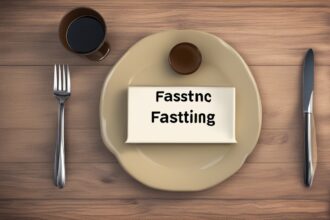Hey there, health enthusiasts! If you’ve ever wondered, what is fasting, and why it’s become such a buzzword in wellness circles, you’re in the right place. fasting, at its core, is the voluntary act of abstaining from food and sometimes drink for a specific period. But it’s so much more than just skipping meals—it’s a practice rooted in history, culture, and now, cutting-edge science. Whether you’re curious about intermittent fasting for weight loss or exploring fasting for spiritual reasons, this guide will break it all down for you. Let’s dive into the fascinating world of fasting, explore its benefits, and arm you with practical tips to get started safely.
What is Fasting? Understanding the Basics
So, let’s start with the fundamental question: what is fasting? Fasting is the intentional restriction of food intake for a set duration, often with specific goals in mind, such as health improvement, spiritual growth, or weight management. It’s not starvation—far from it. Unlike starvation, which is involuntary and harmful, fasting is a controlled practice that, when done correctly, can offer numerous benefits. Historically, fasting has been part of religious traditions like Ramadan in Islam, Lent in Christianity, and Yom Kippur in Judaism. Today, it’s also a popular health trend, thanks to emerging research on its potential to boost metabolism and improve overall well-being (Mattson et al., 2017).
There are various types of fasting, each with its own rules and purposes. Some involve complete abstinence from food, while others allow limited calorie intake or specific foods. The key is that fasting isn’t a one-size-fits-all approach—it’s adaptable to individual needs and lifestyles. As we explore further, you’ll see how understanding what fasting is can open doors to better health and mindfulness.
The Science Behind Fasting: How It Affects Your Body
Now that we’ve covered what is fasting, let’s geek out a bit on the science. When you fast, your body undergoes several physiological changes. After about 12 hours without food, your glycogen stores (the body’s quick energy reserve) start to deplete. At this point, your body shifts to burning fat for fuel, entering a state called ketosis. This metabolic switch is one reason why fasting is often linked to weight loss (Anton et al., 2018).
But the benefits go beyond shedding pounds. Fasting triggers a process called autophagy, where cells clean out damaged components and regenerate. Think of it as a cellular detox! Research suggests that this process may protect against diseases like Alzheimer’s and cancer, though more human studies are needed (Mattson et al., 2017). Additionally, fasting can improve insulin sensitivity, lower inflammation, and even enhance brain function by increasing levels of brain-derived neurotrophic factor (BDNF), a protein vital for learning and memory (Longo & Mattson, 2014). It’s no wonder fasting has caught the attention of scientists and health buffs alike.
Types of Fasting: Finding the Right Fit for You
Understanding what fasting is also means knowing the different approaches available. There’s no single “best” way to fast—it depends on your goals, lifestyle, and health status. Here are some of the most popular types of fasting that people practice today:
- Intermittent Fasting (IF): This involves cycling between eating and fasting periods. Common methods include the 16/8 (fast for 16 hours, eat during an 8-hour window) and 5:2 (eat normally for 5 days, restrict calories to 500–600 on 2 days).
- Water Fasting: A more intense approach where you consume only water for a set period, often 24–72 hours. It’s typically done under medical supervision due to its intensity.
- Religious Fasting: Practices like Ramadan involve abstaining from food and drink from dawn to dusk for a month, combining spiritual and physical discipline.
- Alternate-Day Fasting: As the name suggests, you alternate between normal eating days and fasting days, sometimes consuming minimal calories on fasting days.
Each type has unique benefits and challenges. For beginners curious about what is fasting and how to start, intermittent fasting is often the most accessible due to its flexibility. Always consult a healthcare provider before trying more extreme methods like prolonged water fasting.
Health Benefits of Fasting: What Research Says
One of the biggest draws of fasting is its potential health benefits. While it’s not a magic bullet, science is uncovering some pretty compelling reasons to give it a try. For starters, fasting can aid in weight management by reducing overall calorie intake and boosting fat-burning processes (Anton et al., 2018). But the perks don’t stop there. Studies have shown that intermittent fasting may lower blood sugar levels and improve heart health by reducing risk factors like high cholesterol and blood pressure (Patterson & Sears, 2017).
Beyond physical health, fasting might also support mental clarity and emotional well-being. Many people report feeling more focused during fasting periods, possibly due to stabilized blood sugar levels and the brain-boosting effects of ketosis (Longo & Mattson, 2014). While research is still evolving, these findings highlight why so many are eager to understand what fasting is and how it can transform their lives.
Practical Tips for Starting Your Fasting Journey
Okay, you’re sold on the idea of fasting and have a grasp of what is fasting. But how do you actually start? Diving in headfirst can be overwhelming, so let’s break it down with some actionable advice. Fasting doesn’t have to be intimidating—it’s all about easing into it and listening to your body. Here are a few tips to help you begin safely and sustainably:
- Start Small: If you’re new to fasting, try a 12-hour fast overnight (e.g., stop eating at 8 PM and eat again at 8 AM). Gradually increase the fasting window as you feel comfortable.
- Stay Hydrated: Drink plenty of water during fasting periods to prevent dehydration, especially if you’re doing a water-only fast or exercising.
- Choose Nutrient-Dense Foods: When breaking your fast, opt for balanced meals with protein, healthy fats, and complex carbs to replenish your body without spiking blood sugar.
- Listen to Your Body: If you feel dizzy, overly fatigued, or unwell, stop fasting and consult a healthcare professional. It’s not a competition!
- Avoid Overeating: After fasting, it’s tempting to binge, but this can undo the benefits. Eat mindfully and in moderation.
Remember, fasting is a personal journey. What works for one person might not work for another. If you have underlying health conditions like diabetes or are pregnant, talk to your doctor before experimenting with any fasting regimen. The goal is to enhance your health, not to push your limits unsafely.
Common Myths and Misconceptions About Fasting
As fasting gains popularity, so do the myths surrounding it. Let’s clear up some confusion about what fasting is and isn’t. First off, fasting doesn’t mean you’re starving yourself. When done correctly, it’s a structured practice that still meets your nutritional needs over time. Another misconception is that fasting slows down your metabolism. While prolonged calorie restriction can have this effect, short-term fasting (like intermittent fasting) may actually rev up your metabolic rate by increasing norepinephrine levels (Mattson et al., 2017).
Lastly, some believe fasting is only for weight loss. While it can help with that, fasting offers a range of benefits, from improved mental focus to better blood sugar control. Don’t let these myths deter you—armed with the right info, you can approach fasting with confidence and clarity.
Thanks for sticking with me through this deep dive into what is fasting! To wrap things up, fasting is a powerful tool that, when approached mindfully, can support both physical and mental health. From intermittent fasting to religious practices, there’s a style for everyone, whether your goal is weight management, spiritual connection, or simply feeling more energized. The science is promising, showing benefits like improved insulin sensitivity, cellular repair, and even brain health. But remember, fasting isn’t a quick fix—it’s a lifestyle choice that requires patience and personalization. Start small, stay informed, and always prioritize your well-being. Have you tried fasting, or are you curious to give it a shot? Let’s keep the conversation going in the comments—I’d love to hear your thoughts!
References
- Anton, S. D., Moehl, K., Donahoo, W. T., Marosi, K., Lee, S. A., Mainous, A. G., … & Mattson, M. P. (2018). Flipping the metabolic switch: Understanding and applying the health benefits of fasting. Obesity, 26(2), 254-268.
- Longo, V. D., & Mattson, M. P. (2014). Fasting: Molecular mechanisms and clinical applications. Cell Metabolism, 19(2), 181-192.
- Mattson, M. P., Longo, V. D., & Harvie, M. (2017). Impact of intermittent fasting on health and disease processes. Ageing Research Reviews, 39, 46-58.
- Patterson, R. E., & Sears, D. D. (2017). Metabolic effects of intermittent fasting. Annual Review of Nutrition, 37, 371-393.






